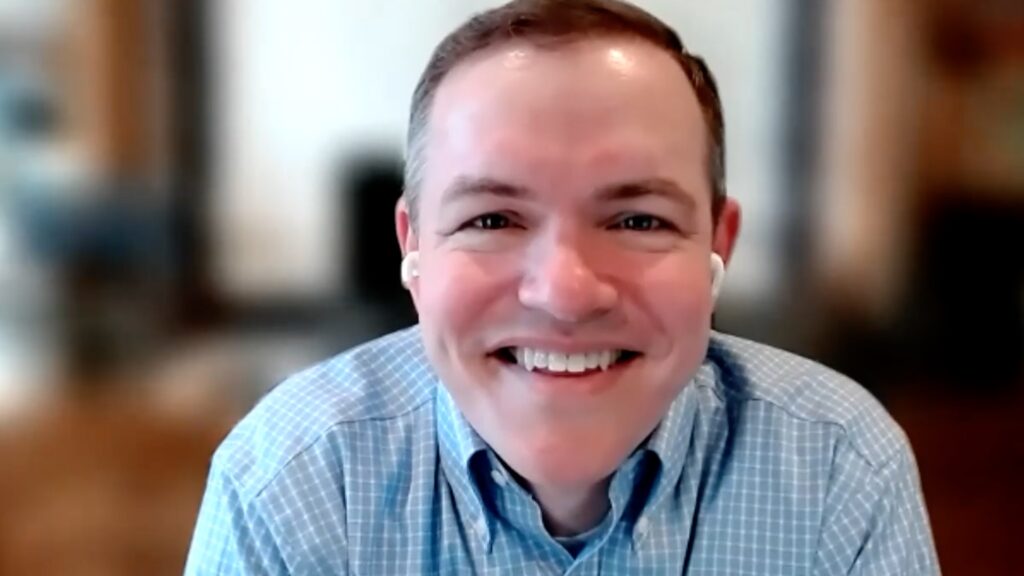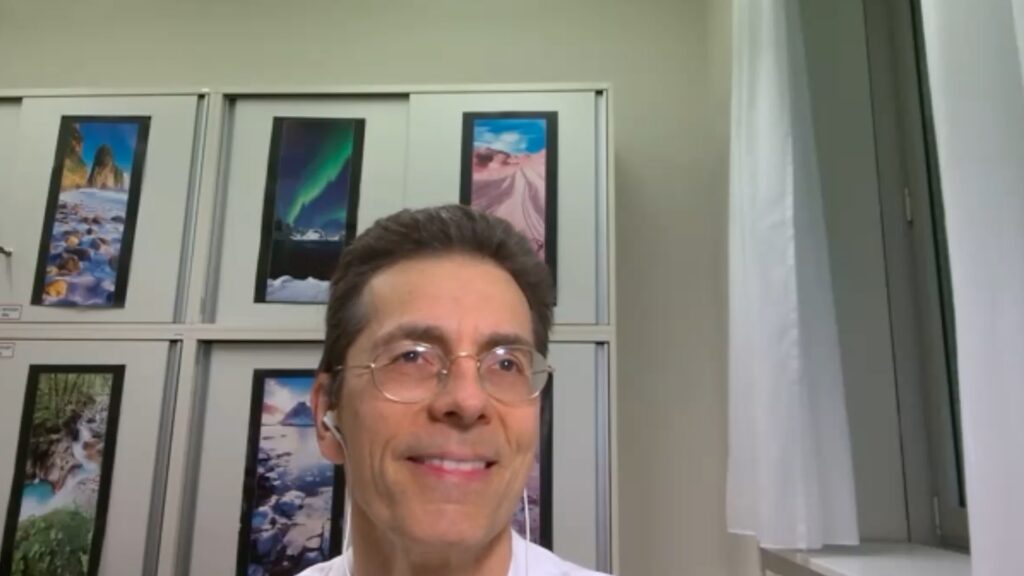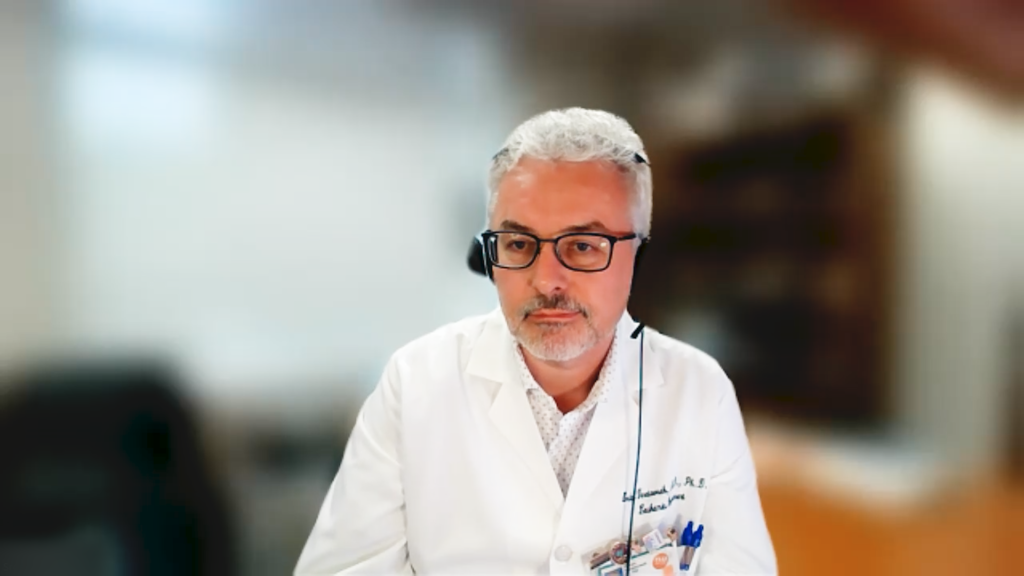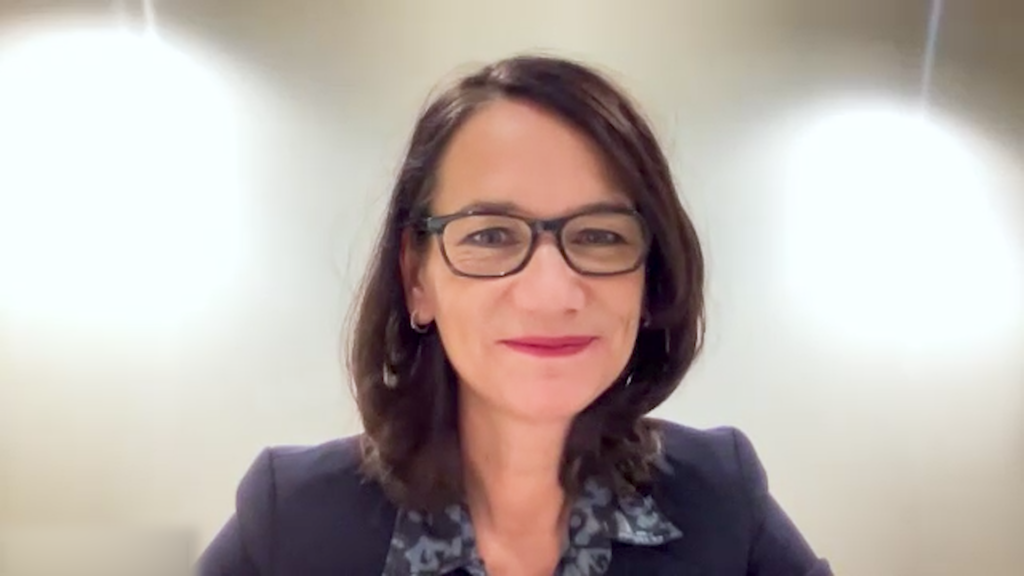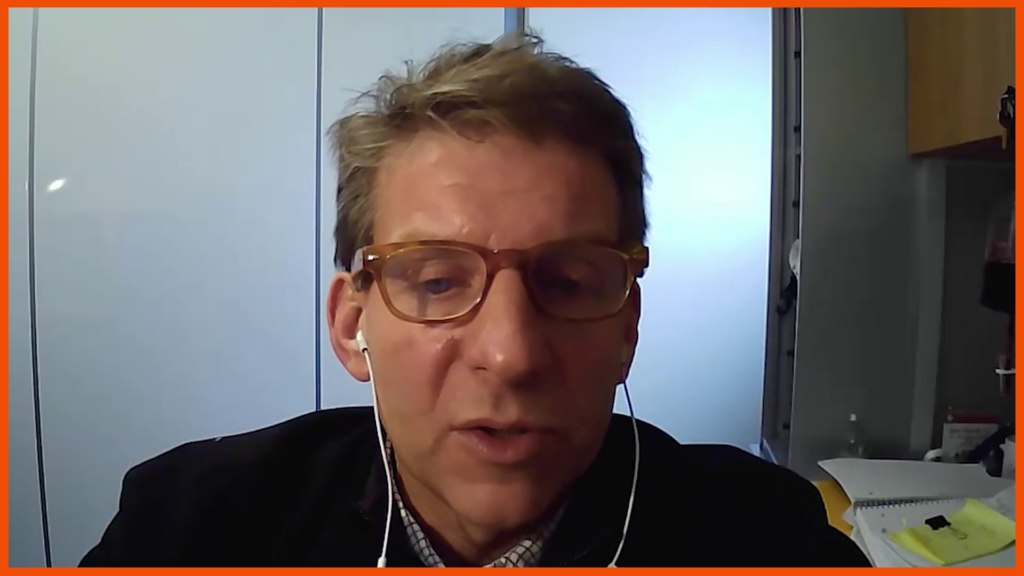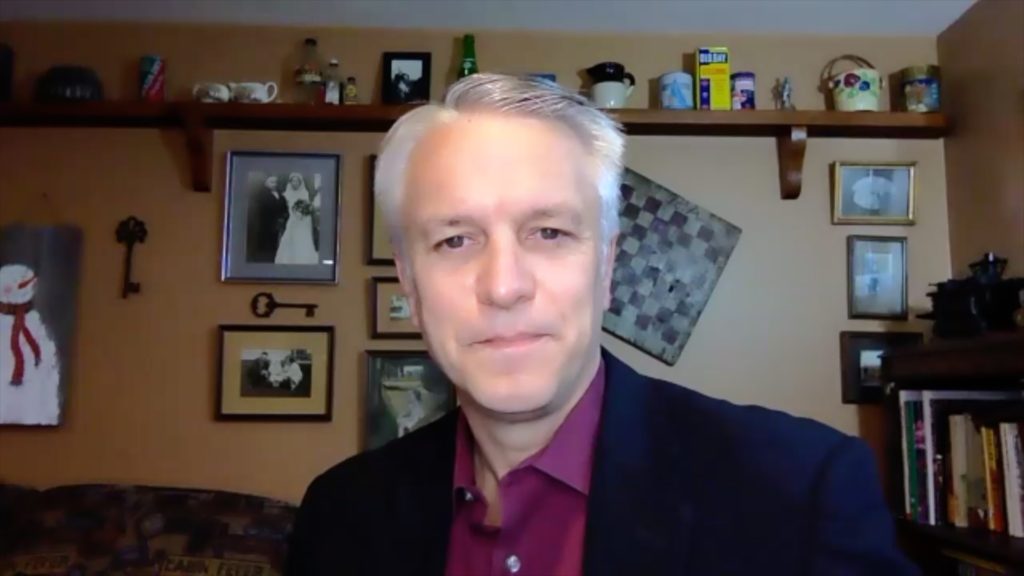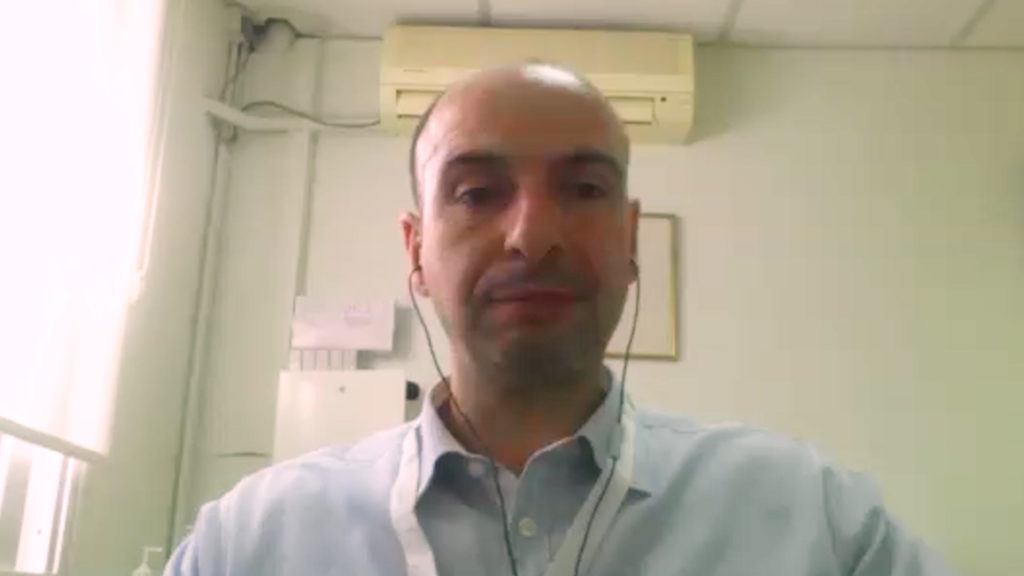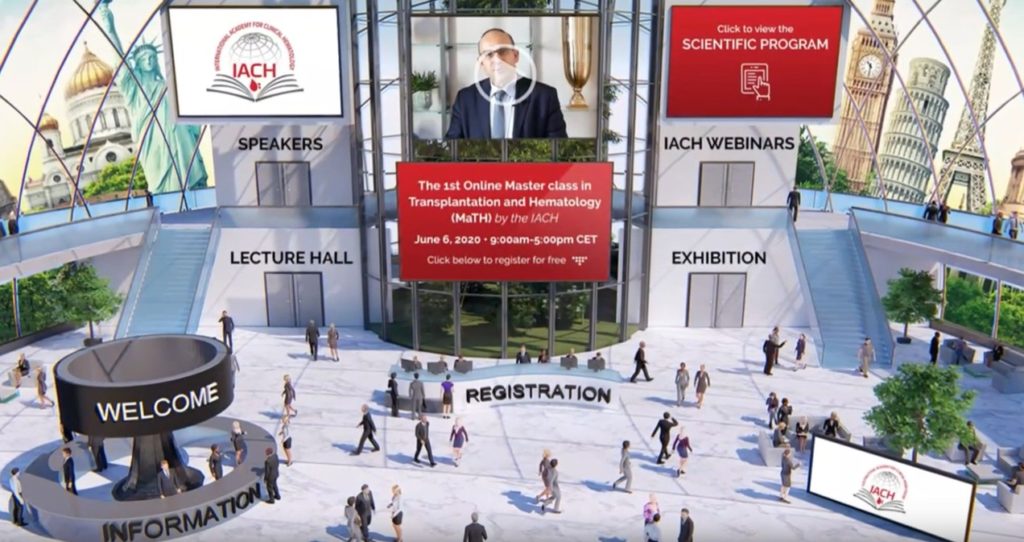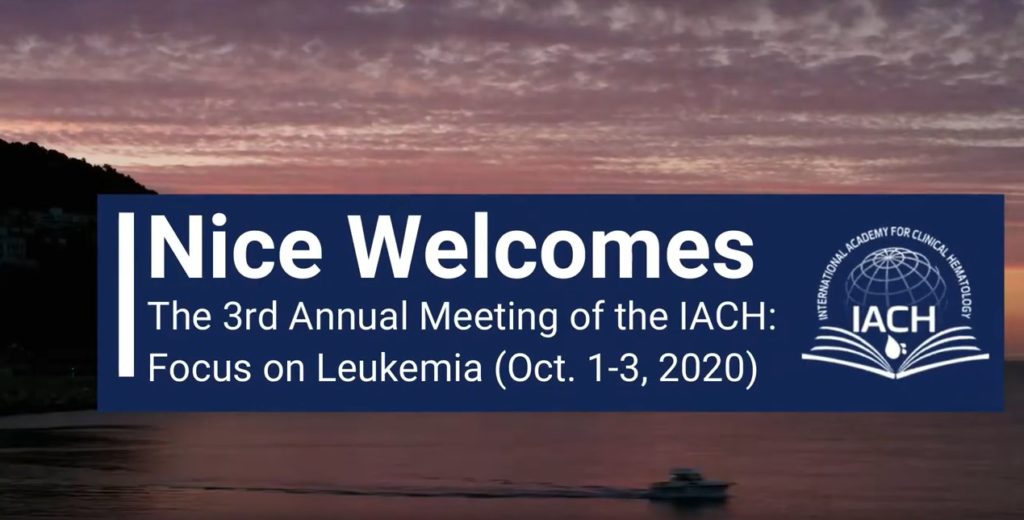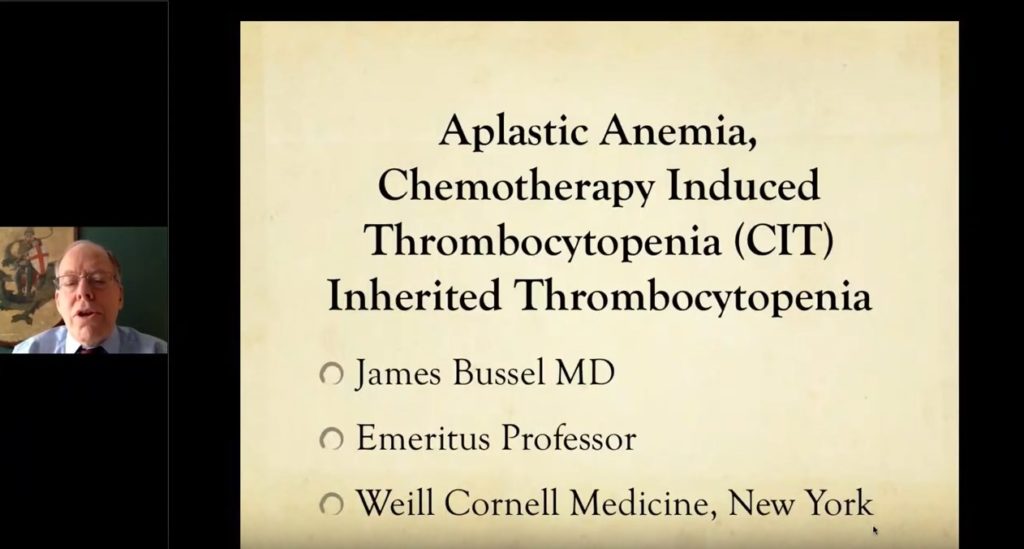The European Society for Blood and Marrow Transplantation (EBMT) was established in 1974 to allow scientists and physicians involved in clinical bone marrow transplantation to share their experiences and collaborate in studies. Recently, the scope of the organisation has broadened to include work in cellular therapy. The 45th Annual Meeting of the EBMT was held on the 24–29 April 2019 in Frankfurt, Germany, and was attended by more than 5,640 people from 94 countries around the world.
For the first time, the EBMT Annual Meeting scientific programme featured a Patient, Family and Donor Day. More than 150 patients, patient advocates, donors and family members attended this session, as well as 159 people from around the world who followed the events via livestream. Sessions included an international panel of specialists discussing advances in stem cell transplants, CAR T-cell therapy, new treatments in graft versus host disease (GvHD), fertility, sexuality and psycho-sociological support. The day ended with personal experiences from a former CAR T patient and two donor-receiver couples.
Another new feature of the meeting was a parallel session dedicated to patient advocates from different disease areas. This focussed on the growing cooperation and mutual influence between patient advocates, clinicians and medical organisations. The Joint Accreditation Committee ISCT-Europe & EBMT (JACIE), which is Europe’s only official accreditation body in the field of haematopoietic stem cell transplantation (HSCT) and cellular therapy, also gave a presentation. The main aim of quality is to improve patient care so it is important that patients are aware of JACIE. Patients’ associations have become involved in fundraising to their local transplant units to prepare for JACIE. JACIE aims to involve the new EBMT Patient, Family and Donor Committee in future initiatives.
The programme of the 8th Cell Therapy Day is considered one of the most important educational tools to raise interest and awareness about existing and emerging cellular therapies. The presentations highlighted the importance of optimising cell collection, cell processing and interactions with other components of a transplant programme to improve patient outcomes. Unsurprisingly, CAR T cells featured prominently in discussions and presentations. The Cell Therapy Day began with a demonstration by Hinrich Abken on the potential for the use of CAR T cells beyond currently approved indications, with a focus on medical oncology. He also described the development of other somatic cell therapy and gene therapy medicinal products manufactured from immune cells or haematopoietic stem cells, including drug products for inherited globin disorders. Discussions of regulatory perspectives allowed delegates to understand the challenges of adapting regulations to accommodate these personalised medicines manufactured from living cells. Several presentations highlighted the need for biological and clinical follow-up, paediatric care and the handling of cryopreserved drug products.
The Cellular Therapy & Immunobiology Working Party (CTIWP) also held its scientific session during the EBMT meeting. Hans-Jochem Kolb presented the Jon van Rood Award to Itauá Leston Araujo, for his recent publication entitled “Human thymopoiesis is influenced by a common genetic variant within the TCRA-TCRD locus”.1 This study identified non-inherited and inherited factors of thymopoiesis including the production of T-cell receptor excision circles. In addition, John Haanen discussed the use of immune effector cells in solid tumours. Florent Malard concluded the session by describing how the microbiota influences our immunological status and how its deregulation can contribute to the emergence of various diseases or alter the response to various therapies including allogeneic HSCT.
The 2019 Paediatric Day provided an overview of paediatric transplantation, cellular therapy and gene editing strategies. Christina Peters presented an interim analysis of the acute lymphoblastic leukaemia forum study. Franco Locatelli summarised the status of ongoing acute myeloid leukaemia (AML) clinical trials and described various options for a prospective HSCT trial in childhood AML, including a two-arm versus a three-arm design. This was followed by a presentation by Selim Corbacioglu of the Haploidentical HSCT for Sickle Cell Disease Trial. The second part of the session was dedicated to the management of HSCT in low- and middle-income countries, where the majority of patients with haemoglobinopathies are born. Outreach programmes such as the “Cure2Children” foundation, which was described by Lawrence Faulkner, are vital for the development of effective transplant programmes in these countries. The remainder of this session focused on cellular therapy. Persis Amrolia and Rupert Handgretinger highlighted the potential of CAR T-cell strategies and gene editing approaches for paediatric indications.
The Inborn Errors session covered both established and novel treatment modalities for inherited diseases. Maria Ester Bernardo presented encouraging first results of lentiviral-based gene therapy in MPS1/Hurler’s disease. Michael Albert described an Inborn Errors Working Party (IEWP) study in Wiskott-Aldrich syndrome, which showed excellent survival in patients treated according to current busulfan and treosulfan-based IEWP SCT guidelines. Robert Chiesa presented data from an IEWP study on a large cohort of patients with chronic granulomatous disease. Results showed that age and colitis are important predictors of outcome. Arjan Lankester presented data from an IEWP/Stem Cell Transplantation for Immunodeficiencies in Europe (SCETIDE) registry in SCT outcome in patients with severe combined immunodeficiency, which showed a clear correlation between immune reconstitution profile at 1 year and long-term clinical outcome. Graham Davies described the London experience with thymus transplants in patients with inborn thymic defects. Finally, Pietro Genovese discussed the preclinical experience with T cell gene editing in CD40 ligand deficiency as a potential alternative to conventional HSCT.
The Paediatric Diseases Working Party (PDWP) and the IEWP gave a number of presentations on developments in stem cell therapies. These included advances in GvHD prophylaxis/immunosuppressive approaches in the haploidentical setting, antiviral treatment after HSCT, haploidentical SCT approaches in malignant and non-malignant diseases, gene therapy in metabolic diseases, hemoglobinopathy and immune disorders, management of infectious complications and use of clinical score as a tool to guide therapeutic decision making.
The 4th Pharmacist Day reflected the importance of gene and cell therapy for pharmacists, and included a presentation from Boris Fehse on CAR T cells. In addition, Anne Black described her experiences with implementation of CAR T therapies in the UK, Maria Ester Bernado gave a presentation entitled “Gene therapy: current and upcoming”, and Claudia Langebrake discussed the challenge of establishing the preparation of gene therapy in the pharmacy. The session on personalised dosing of conditioning agents beyond busulfan included presentations on cyclophosphamide by Jeannine McCune, fludarabine by Jurgen Langenhorst, melphalan: using a test dose strategy by Karen Sweiss, and clofarabine by Erik van Maarseveen. The final session featured a presentation by Rick Admiraal on pharmacokinetic/pharmacodynamic aspects of biologicals. Barbara Claus highlighted the pharmaco-economic and pharmacovigilance aspects of biologicals and biosimilars in SCT. João Gonçalves discussed the safety and efficacy of biosimilars. Finally, Marye Boers considered the management of adverse events in immunotherapy.
The 3rd Psy Day gathered international experts in psycho-oncology to discuss the psychological dimensions of bone marrow transplantation and SCT. Two sport scientists, Anna Senn-Malashonak and Susanne Wallek, presented results of their study entitled “Psychophysical effects of an exercise therapy during paediatric stem cell transplantation – a randomised control trial”. In addition, Katharina Kuba, presented data from a study investigating traumatic experiences after SCT.
In summary, this 45th Annual Meeting of EBMT was an exciting and well attended event, which highlighted advances in SCT and cellular therapies such as HSCT, CAR T-cell therapy, genome-edited haematopoietic stem cells, stem cell biology, GvHD, and novel non-cellular based immunotherapies. The diverse range of participants reflected the commitment of the EMBT to give patients a stronger voice and to include all health care providers who are involved in the field of SCT and cellular therapies.
The abstracts from EBMT 2019 are available online here.
Published: May 21, 2019
Support: No funding was received in the publication of this article.
References
1. Clave E, Araujo IL, Alanio C, et al. Human thymopoiesis is influenced by a common genetic variant within the TCRA-TCRD locus. Sci Transl Med. 2018;10: pii: eaao2966.


